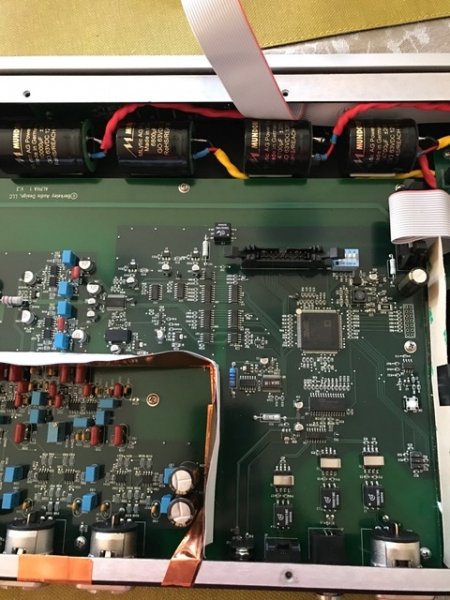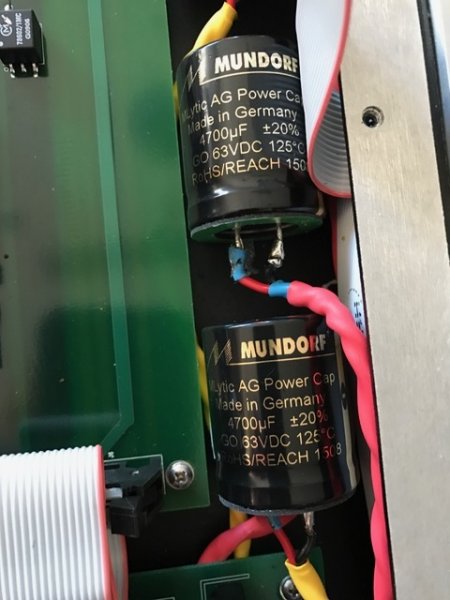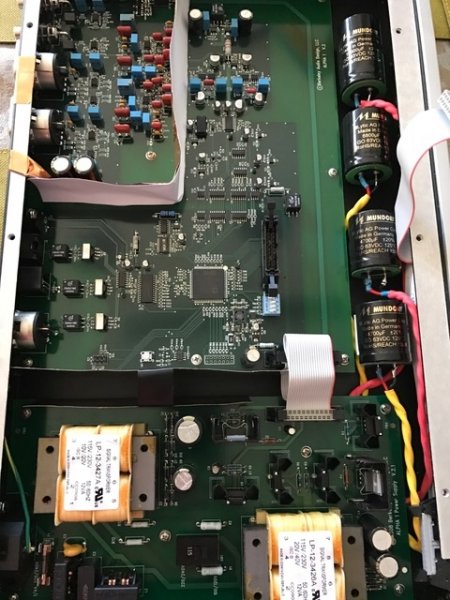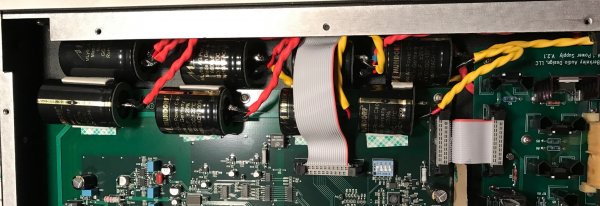Thank you Al for taking the time to write all this up so well, and I am glad you enjoyed it! Six hours went by really quick. And thanks BMCG!
I have a few thoughts to share:
MIT speaker cables, SD vs HD: I wrote a while ago in these pages that SD is it for me. Apparently, as it now turns out, HD was simply exposing and accentuating sonic deficiencies upstream, and once these are cleared, the HD setting with these extra F.A.T poles works just fine and also as advertised: life-like transients. Moreover, the treble cleanliness (especially the metalic cymbal character) & treble dynamics that you heard are directly attributed to it, and not properly corrected by the SD network - I should have demonstrated this, it is quite easy to tell. Treble dynamics are particularly hard to render correctly by any component.
Can digital sound like analog? Great analog is undoubtedly high resolution and can be spectacular and lifelike. Digital has theoretical limitations (e.g. see square wave response measurements), but there is now convincing evidence that it is also fundamentally capable of equally spectacular analog sound, even lifelike; and the higher the resolution, the more lifelike it is. Digital theory aside, a huge part of getting digital right is in the implementation, and it's very hard to do so.
Is RBCD enough for great analog sound? My conclusion at this is point is a resounding Yes, but the implementation is hard; and again, even greater resolution will give you even greater sound - case in point, HDCD and the alleged 18-bit virtual resolution that we heard. I would really love to play some true 24-bit hi-rez PCM now through this Alpha, but USB is currently the limiting factor. I personally find digital implementation extremely challenging, perhaps as challenging as analog circuits; for one, a DAC must implement both digital and analog correctly to sound great, and must be driven by an equally competent digital source.
My current digital font-end: Despite my Alpha modifications, if you look closely at the DAC, it is a very competent design and execution, though not state-of-the-art. The modifications take it to many higher levels, as you heard, and the need for them became apparent only with the current "Spectral Lab" of amplification (aka 30SV->400RS). Moreover and as discussed, I feel it also surpasses the Rossini that I had at home, in certain areas. At the same time, to get this level of performance, the extra-ordinary Spectral SDR-3000 transport is a big part of this, and I continue to seriously doubt that any computer-based digital feed can possibly come close, certainly nothing with USB written anywhere near it. And mind you, this transport must have been designed over 20 years ago?!??!?
How does the transport affect things? For starters, I'll just point you to the Lampizator folks' own technical assessment from a while ago at
http://www.lampizator.eu/lampizator/TRANSPORT/CD_transport_DIY.html and what they think competent is or not; the conclusion is as follows: "
And now something really good: Audio Note Transport 2 - one of my top picks! ... [redacted]... And finally - what is believed to be the BEST TRANSPORT IN THE WORLD - but not the bullshit kind like marble tumb, but real meaningful honest engineering: Spectral SDR-3000 from USA based on modified VRDS Esoteric (teac/sony colaboration) transport." Here, I would add that MBL transports may in fact be even better.
Note decay with digital: Simply put, if you lower the noise floor enough - and that, again, implies solid implementation - I don't want to hear that digital cannot do note decay, including proper treble decay. If I have ever said this myself, then I stand corrected.
What do I think about the "Spectral Lab" and the new SDR-4000SV: Until I am able to tell sonic shortcomings, I will continue calling the 30SV->400RS "straight wire with gain" and leave the "how much gain" debate for some other time. We simply have Keith Johnson and his team to thank for this kind of engineering prowess. Just freaking AWESOME and oh so inspiring. Personally, I have not yet heard such treble resolution and treble dynamics from any other solid state electronics. The 4000SV is an interesting question; I am unable to draw any conclusions based on my recent audition, because it involved the Avalon Compas speakers, and despite the fact they also used the 30SV->400RS, the Avalons are simply so veiled that I could only draw certain aspects of the sound that possibly seemed better than mine, like the body of timpani, but I am not too sure. However, when driving the Rockport Cygnus, things sounded really interesting, worthy of further exploration of the player.
These stat hybrids or Magicos? This has always been a tough question for me; it is even tougher now; and I have yet to hear the M3s sound good, with the same current Spectral electronics, which included the 4000SV. For one, transient speed was not exactly what you heard here, but it might also be the SD setting on the MIT speaker cables that dealers usually use. So the jury is still out on this one...
Finally, I agree with you, this system has vividness and speed written all over it; there is certainly nothing polite about it; 'raw' is probably a most-fitting word. And let's define 'speed' correctly: very fast rise and settling, with no overhang and proper note decay.
Next time, we'll play analog and do some A/B, with the caveat that mastering can never be guaranteed to be the same, or even great.
Such a fun and rewarding hobby, at all price levels...
-ack








